Our research group has focused on designing emergent low-dimensional materials at atomically precise length scales to investigate their novel quantum properties and tackle contemporary challenges in quantum devices and sustainable chemical transformations. Specifically, we have pursued two key directions: the development of emergent atomic quantum materials and novel catalytic materials with atomically precise active sites to address critical bottlenecks hindering their practical applications. Our primary experimental tool is the low-temperature scanning probe microscope, specifically the scanning tunneling microscope (STM) and non-contact atomic force microscopy (nc-AFM). These advanced techniques enable the precise construction of quantum states of matter and offer unparalleled insights into how the quantum world operates at the atomic scale.
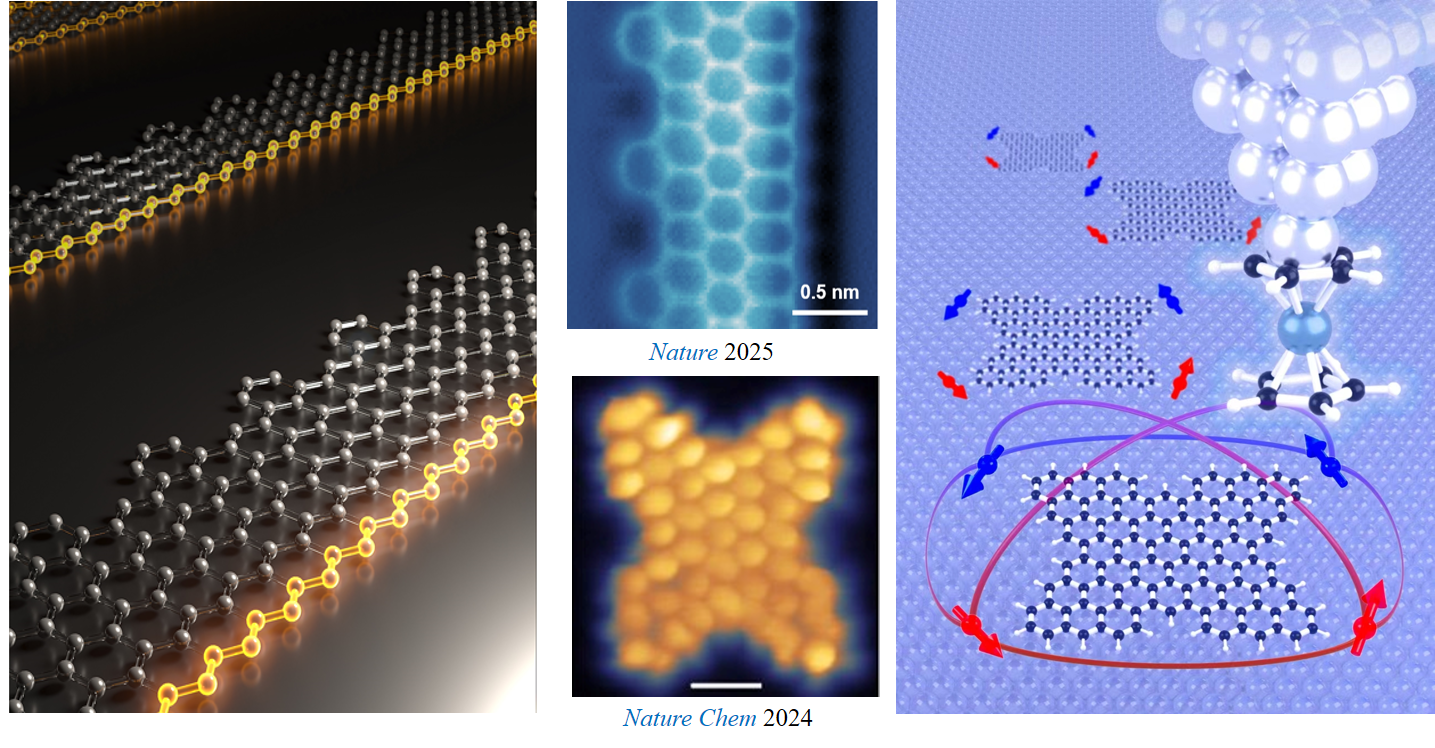
Atomic architecting of carbon-based quantum materials
Designing carbon-based quantum materials (CQMs) that host robust π-spin centers and exhibit unconventional collective quantum magnetism, such as magnetic nanographenes and magnetic graphene nanoribbons (GNRs), is essential for the development of ultrafast spintronic devices and new-generation solid-state qubits for quantum information technologies. Our recent work demonstrates the design, synthesis and characterization of one-dimensional (1D) Janus GNRs (JGNRs) featuring two distinct edge designs: one edge has a zigzag geometry while the other zigzag edge is decorated with the well-designed topological defect array (Nature 2025). In addition, we also discover a new design strategy that combines topological frustration and electron–electron interactions to fabricate a polyradical nanographene hosting a many-body singlet ground state and strong multi-spin entanglement. Additionally, we have employed nickelocene magnetic probe to characterize nanographene’s multiple spin states directly (Nature Chemistry 2024).

AI for quantum materials
The rapid advancement of quantum technologies has motivated the search for novel quantum materials capable of supporting well-defined, controllable, robust quantum states under operational conditions and scalable for integration into practical quantum devices. AI for science has emerged as a powerful tool to accelerate the development of quantum materials and translate them into practical, large-scale quantum devices (Nature Synthesis 2024).
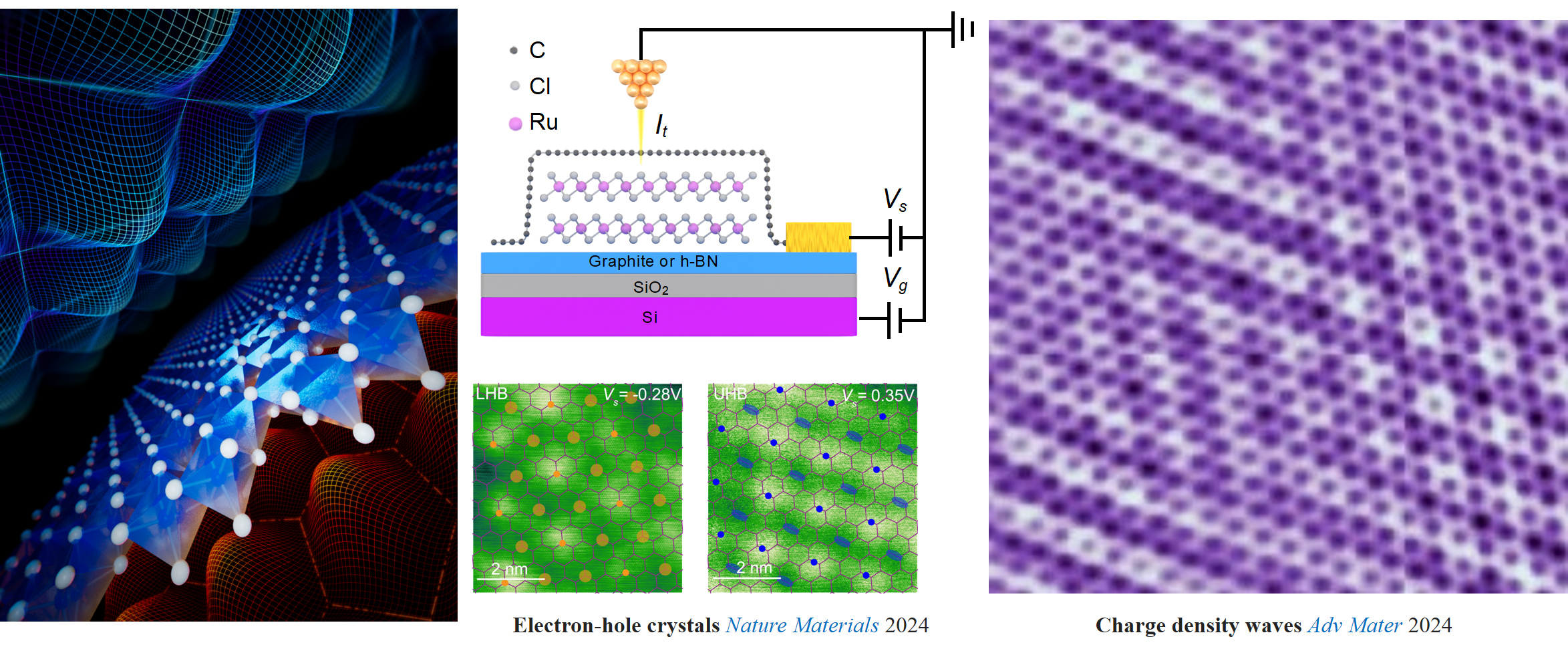
Atomic architecting of quantum states of matter in correlated systems
Scanning tunneling microscopy (STM) is a versatile tool when it comes to the study of electronic properties of metallic systems at the atomic scale. Despite its obvious advantages, this technique also has a number of drawbacks: it can only investigate conductive materials and lacks direct access to the information about the momentum distribution and magnetic ordering of the electronic states. Our group demonstrated that the application of van der Waals (vdW) technology to the STM enables probing atomic-scale electronic and magnetic properties of 2D magnetic insulators (Nature Commun. 2021). The atomic-scale insights obtained through this platform pave the way for further improving macroscopic-scale device performances. We then (Nature Materials 2024) demonstrated that the correlated system linked to the gate-tunable electron reservoir creates a unique and versatile platform for realizing novel correlated quantum states, such as imbalanced electron–hole crystals in a doped Mott insulator, namely, α-RuCl3, through gate-tunable non-invasive vdW doping from graphene. Moreover, a gate-induced transition of electron–hole crystals is directly visualized, further corroborating their nature as correlation-driven charge crystals. The realization and atom-resolved visualization of imbalanced electron–hole crystals in a doped Mott insulator opens new doors in the search for correlated bosonic states within strongly correlated materials.
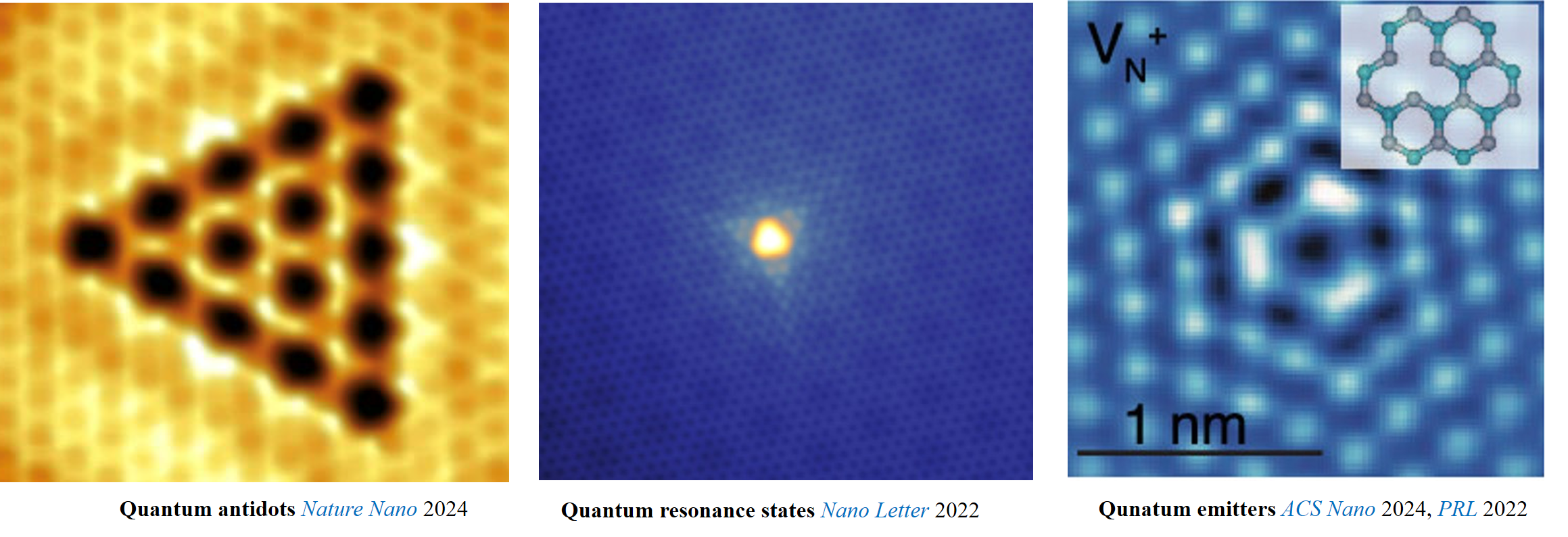
Engineering quantum defects for quantum emitters and spin qubits
Atomic-precision fabrication of novel quantum states of matters and quantum defects for atomic-scale quantum devices is central to quantum nanotechnology. We also demonstrated the fabrication of atomically precise quantum antidotes through self-assembly of single vacancies in a 2D transition metal dichalcogenide (Nature Nanotechnology 2023). These QADs host tunable quantum hole states, completely opposite to quantum dots, which are robust to oxygen substitutional doping. Therefore, single-vacancy-assembled quantum antidots exhibit unprecedented robustness and property tunability, positioning them as highly promising candidates for advancing quantum information technologies. In additional, we also studied quantum defect centers in insulators, which play a critical role in creating important functionalities in materials: prototype qubits, single-photon sources, magnetic field probes, and pressure sensors. These functionalities are highly dependent on their midgap electronic structure and orbital/spin wave function contributions.
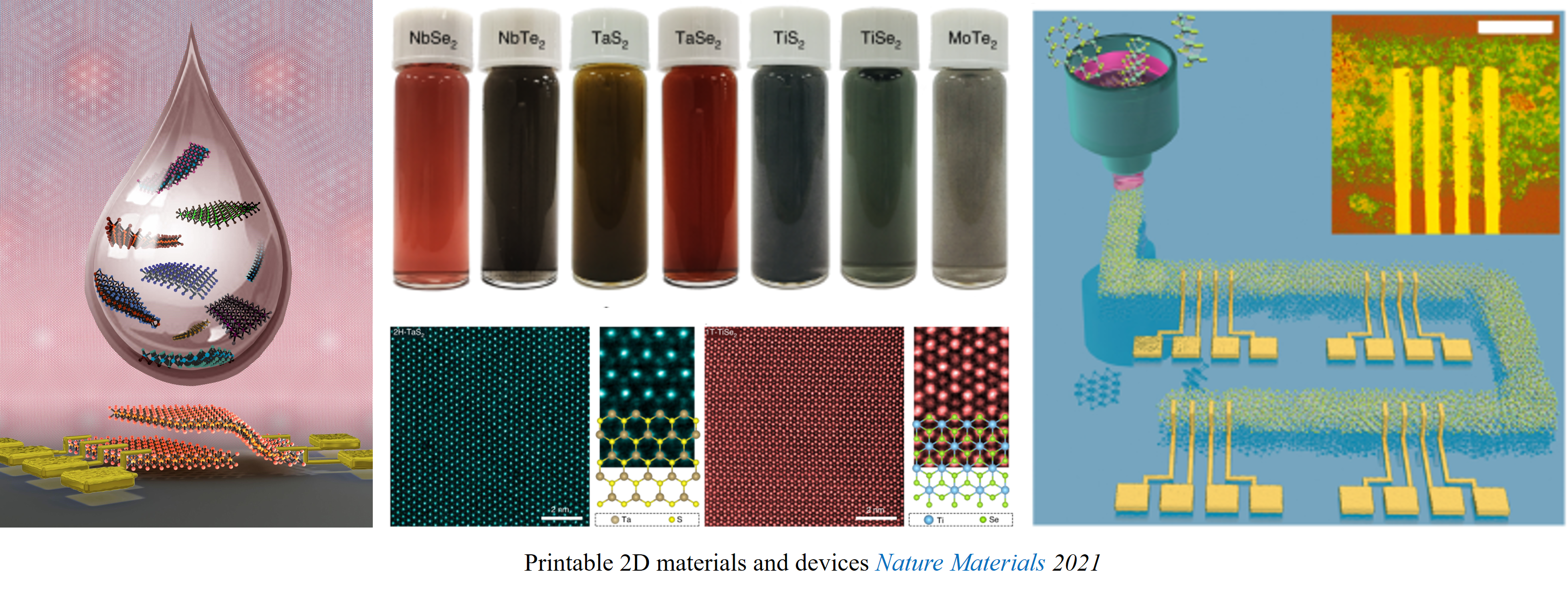
2D materials synthesis and printable devices
The synthesis of 2D materials such as graphene, black phosphorus, transition metal dichalcogenides (TMDs), and boron nitride and their integration into printable devices represent a frontier in materials science and technology. These 2D materials exhibit exceptional properties like high electrical conductivity, mechanical flexibility, and tunable electronic characteristics, making them ideal candidates for next-generation electronic and optoelectronic devices Our group aims to develop facile and effective approaches for the scalable synthesis of a wide range of printable two-dimensional materials towards new-generation flexible electronics such as transistors, sensors and photodetectors (Nature Materials 2021).
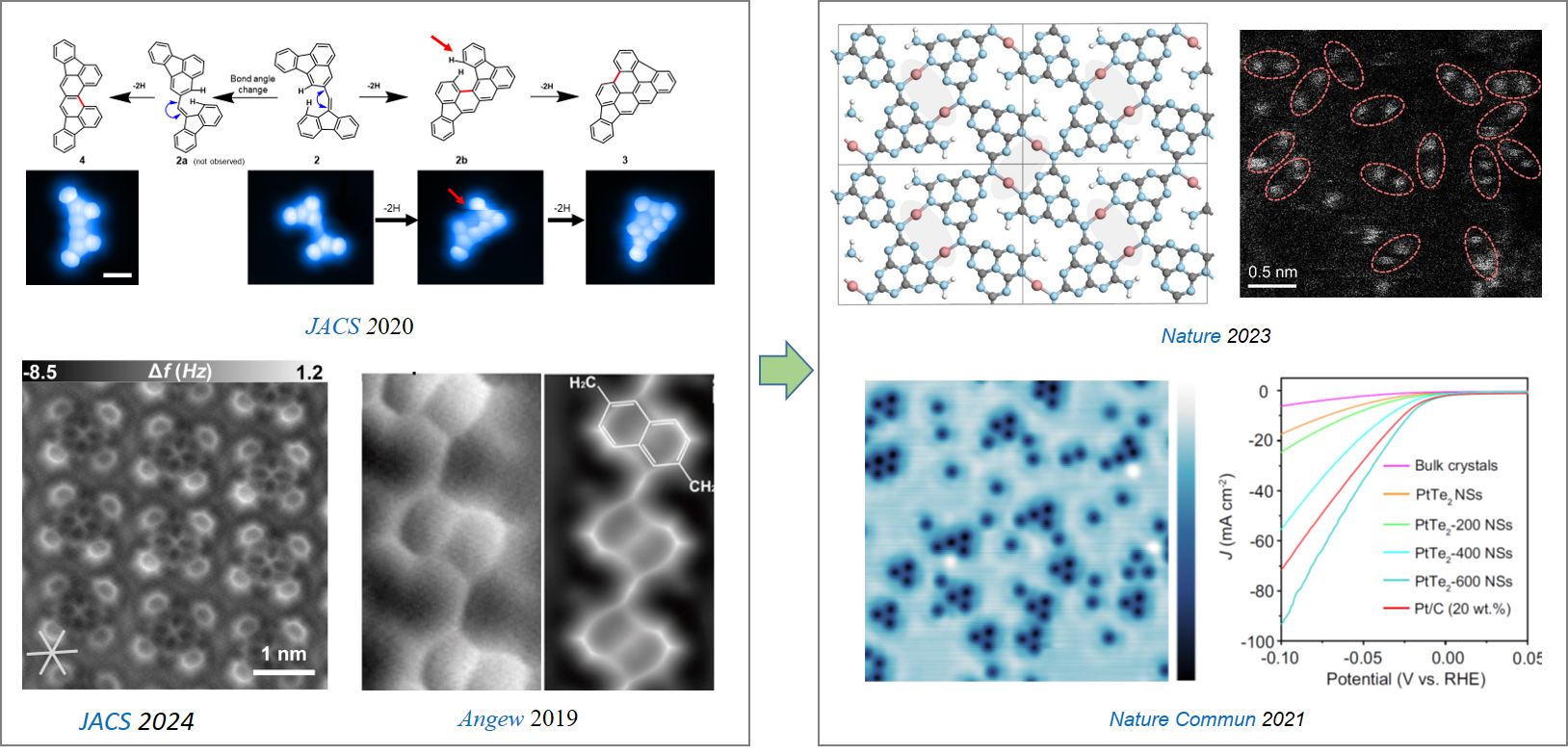
Linking atomic-scale chemistry with novel catalyst design
Linking atomic-scale chemistry with novel catalyst design is a powerful approach that bridges fundamental science and practical applications. By understanding chemical processes at the atomic level, one can uncover reaction mechanisms, optimize active sites, and tailor catalysts with unprecedented precision. This synergy enables the development of highly efficient, selective, and sustainable catalysts, addressing critical challenges in energy conversion, environmental remediation, and chemical manufacturing.
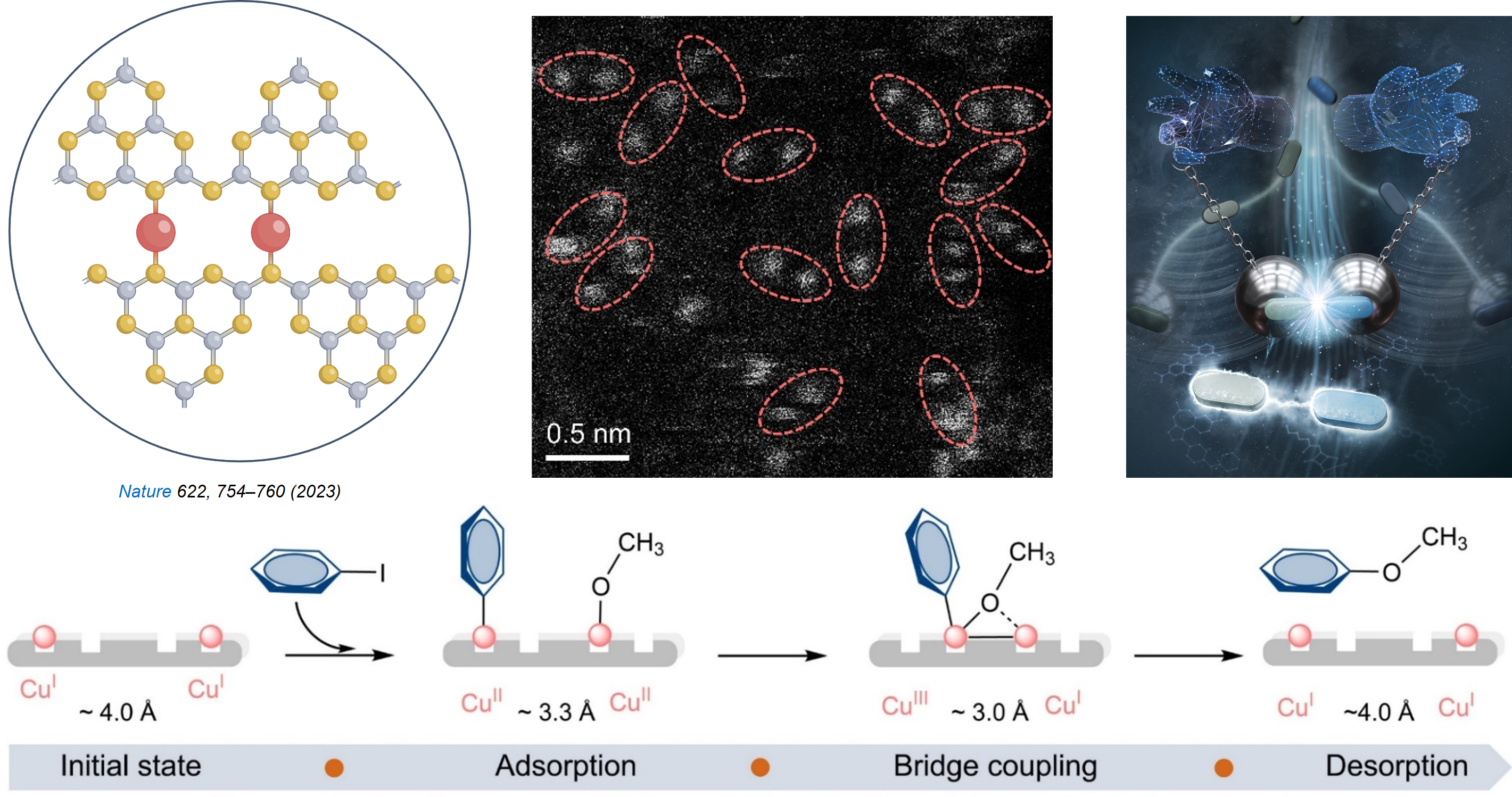
Geminal-atom catalysis for sustainable chemical manufacturing
our team has made remarkable progress in developing next-generation heterogeneous catalytic materials with atomically precise dynamic active sites, such as the geminal atom catalyst (Nature, 2023). The chemical manufacturing sector continues to grow and thrive worldwide. Transition-metal-catalysed cross-coupling reactions, which are critical for developing molecular complexity in organic syntheses, typically exploit homogeneous organometallic complexes. The development of heterogeneously catalysed processes is highly attractive for large-scale production to facilitate catalyst separation, recovery and reuse, and improve adaptability for continuous-flow synthesis. However, existing heterogeneous catalysts often feature inherent limitations that include site diversity, poor surface-area-to-volume ratio and a lack of molecular precision, which consequently lowers overall atom utilization, catalytic activity and selectivity. GACs consisting of pairs of low-valence metal centres with a regular ground-state separation and suitable coordination dynamics to enable site cooperativity. The adaptable coordination of individual Cu sites in GACs enables a cooperative bridge-coupling pathway through dynamic Cu–Cu bonding for diverse C–X (X = C, N, O, S) cross-couplings with a low activation barrier. These advanced catalysts not only achieve significantly higher yields and greater efficiency but also offer a markedly improved environmental impact compared to conventional options. Achieving a carbon footprint and production cost that is 10 times lower than traditional catalysts, these advanced catalysts are highly appealing for industry adoption
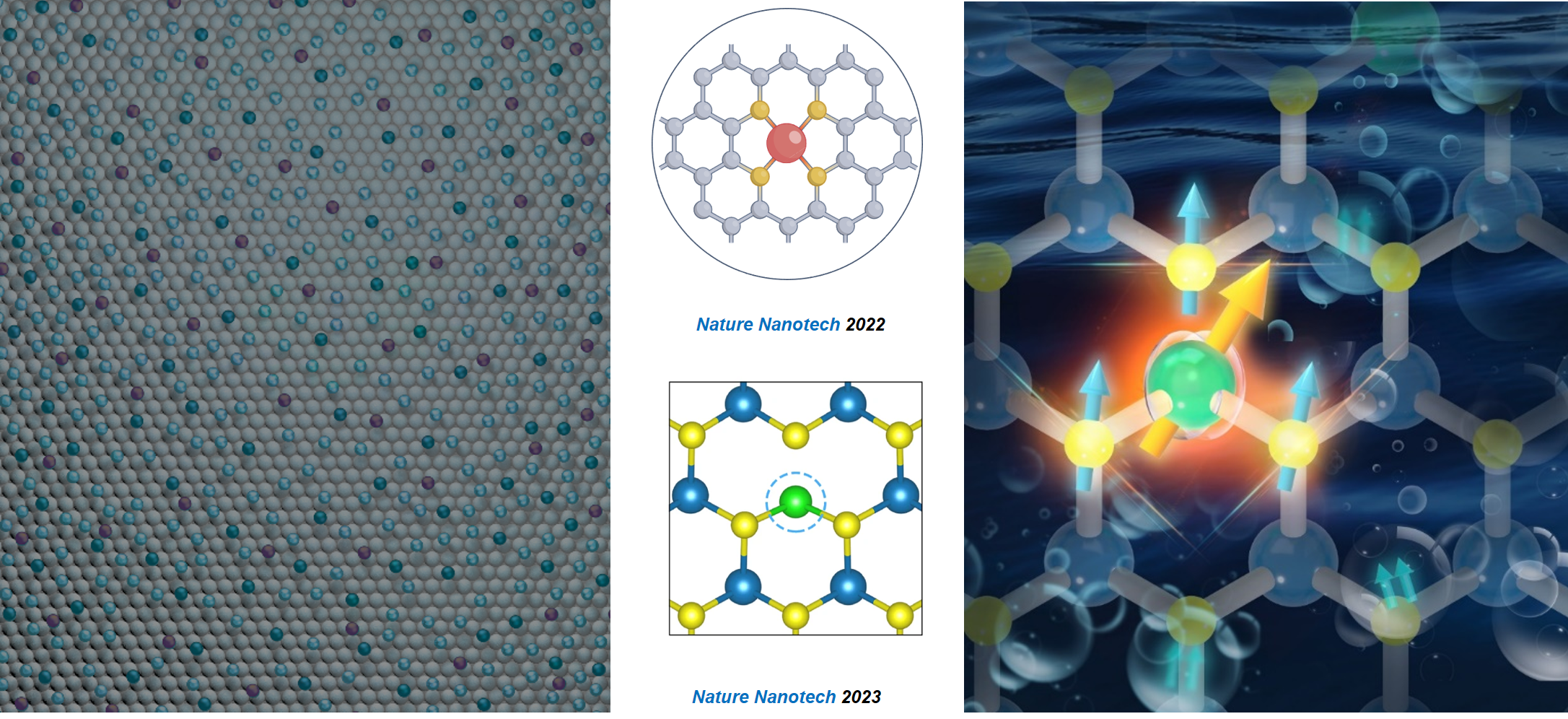
Single atom catalysis: large-scale synthesis and applications
Single-atom catalysts (SACs) and their catalysis have emerged as a new frontier in heterogeneous catalysis and demonstrated remarkable performances for various important chemical transformations due to their high catalytic activity with the maximized atomic efficiency of metal atom use. We are interested in the design and synthesis of novel SACs for chemical transformation and energy conversion. Our team developed a facile and versatile synthetic platform for the scalable fabrication of ultra-high-density single-atom catalysts (SACs) (Nature Nanotechnology 2022). A fundamental challenge in implementing this pioneering class of SACs in many technical applications is the lack of synthetic routes enabling the preparation of these catalysts with high surface densities. Achieving the latter is particularly important to maximize the productivity per unit reactor volume or area in large-scale processes. Our work address the long-standing loading density issues for the large-scale production.

